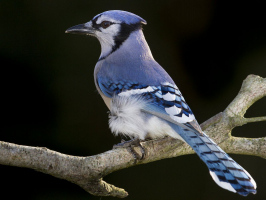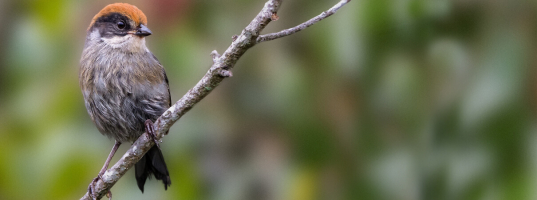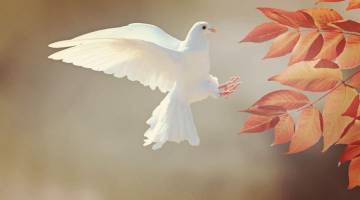Top 10 Loudest Birds in the World
Birds are known to be the best vocal. Some birds simply cannot stay quiet, and their cacophony may cause hearing damage. Here are the list of the loudest birds ... read more...in the world, who can chirp so loudly that they don't need to say much.
-
The Nanday Conure, also known as the Black-Hooded Parakeet or Nanday Parakeet, is a colorful neotropical parrot native to South America. Many of the loudest birds have chirps that are appropriate for their native tropical habitat. The chirp of the Nandy Conure reaches 155 decibels, which is comparable to that of firecrackers. As a result, it is the loudest bird in the world. It's also an exotic-looking pet bird with the ability to learn tricks and communicate.
Nanday Conure prefers natural food supplies offered by agriculture and are most often found in groups of at least ten birds. Because their green color blends well into the surroundings, you're more likely to hear their characteristic call before seeing the birds in the wild. They are a popular attraction for bird shows because of their size, bright colors, ability to learn tricks and converse, as well as their social qualities. One of their most well-known pranks is to take dollar bills from audience members and then return the money to the same person.
Noise: 155 dB
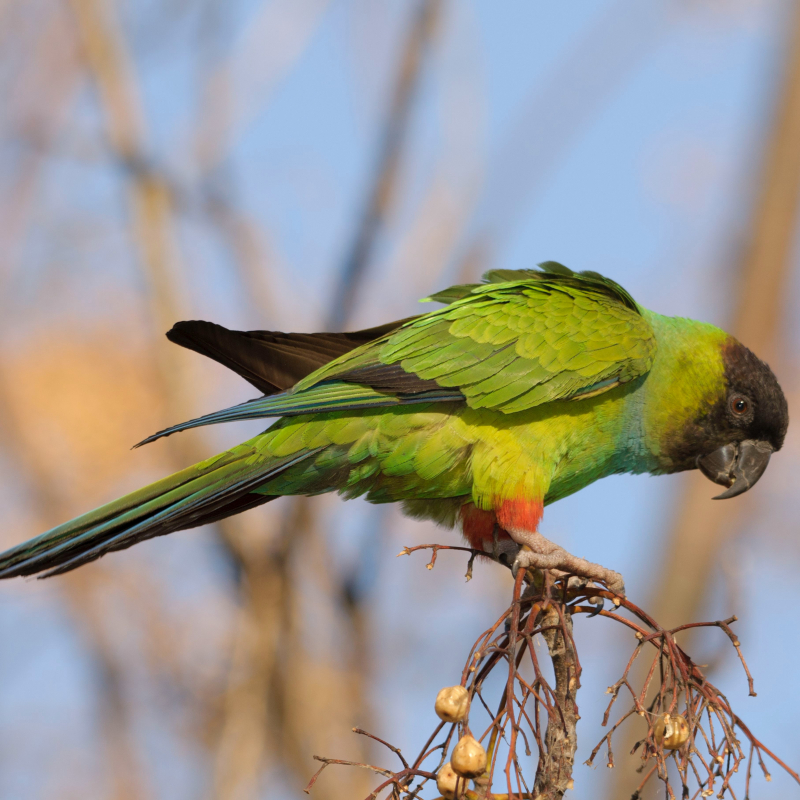
Photo: The Spruce Pets 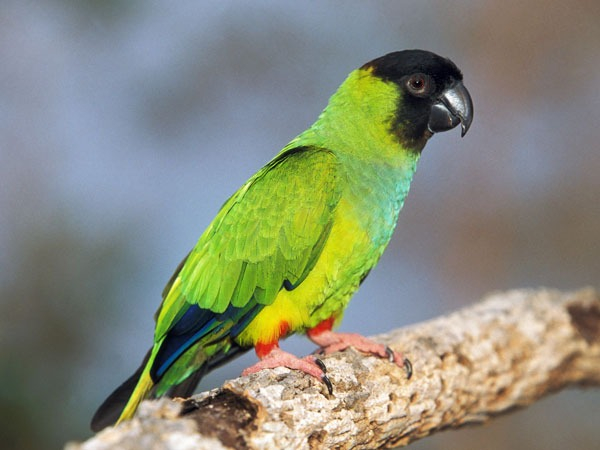
Photo: Vivo Pets -
The Moluccan Cockatoo, also known as the salmon-crested cockatoo, is a bird native to eastern Indonesia's Seram archipelago. Due to habitat degradation and the cage-bird trade, it is a vulnerable species in the wild. Its chirp has a maximum volume of 135 decibels and an average volume of 120 decibels. At 125 decibels, the volume becomes unbearable, with 120-129 decibels equating to a rock concert, a loud symphony, or a sports crowd. A stock car race (130db) and a gunshot or siren at 100 feet are both at 135 decibels (140db).
The Moluccan Cockatoo is a huge white cockatoo that can grow to be one of the largest in the world. The color of the Moluccan cockatoo is rosy-pink, with the intensity of the pinkness varies from individual to individual. The feet and beak are black, although they are mostly coated in powder down, giving them a gray appearance.
Noise: 135 dB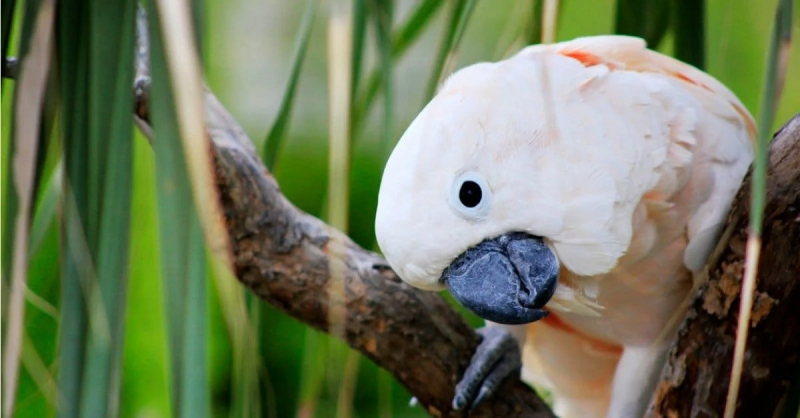
Photo: A-Z animals 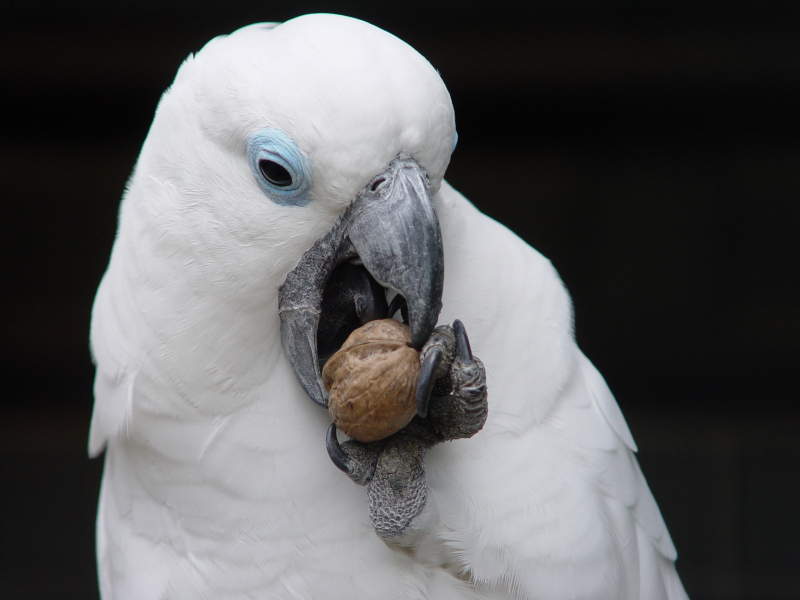
Photo: Wikimedia Commons -
The most well-known of the loudest birds is the rooster. However, it does not chirp as loudly as a crow. Some roosters only crow at 90 dB, the same as a barking dog, but others can crow at 130 decibels or more. However, even at 90 decibels, they are regarded as a nuisance in some areas due to their loudness, which occurs spontaneously and frequently throughout the morning and afternoon.
The most popular meaning of a rooster crowing is that it is morning. When roosters crow before daylight, it's to remind their flock that it's time to fend off predators and go foraging for food. During a rooster wake-up call, the "head rooster" will always be the first to crow. If there are any more roosters in the flock, they will eventually join in. Crowding is also a means for roosters to communicate with other animals. It's a warning to other flocks' roosters to keep away from their hens and territory.
Noise: 130 dB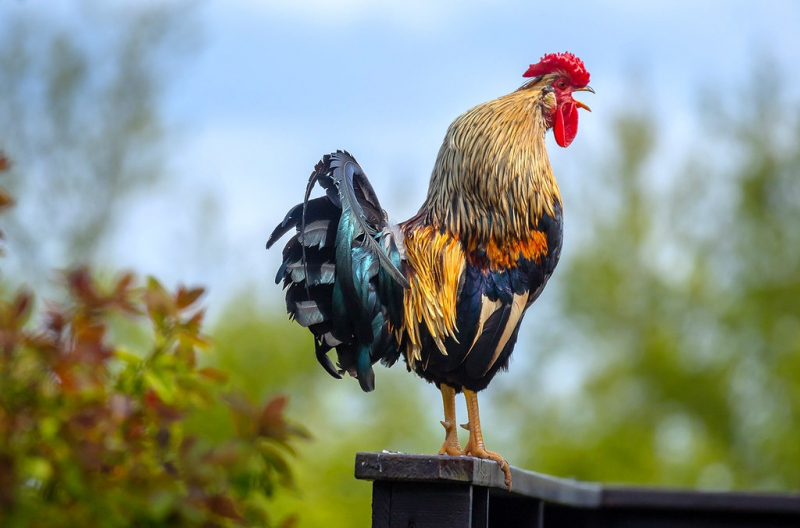
Photo: Flickr Source: Nature and Animals NZ -
The White Bellbird, a South American bird that lives in the Amazon, notably in the Guianas, Brazil, and Venezuela, is another loudest bird to ever chirp. The males' shouts, which are even louder than howler monkeys, are used as mating calls. Its sound, which sounds like a fire siren, may reach 125 decibels, which is comparable to an extremely loud concert. When a female comes close by, the males keep their loudest sounds for when she is nearby.
Males have a dazzling white bill with a prominent black bill with a wattle dangling from the top. Females, on the other hand, have brown streaks running through their green plumage. The White Bellbird's anatomical traits, such as exceptionally thick and developed belly muscles and ribs, were thought to be related to their singing. The ability to sing loudly came at a cost: as bellbird melodies became louder, they decreased shorter in duration.
Noise: 125 dB
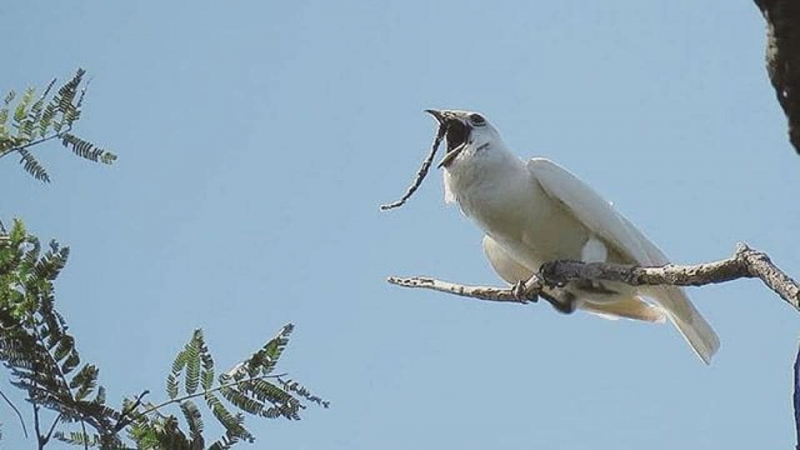
Photo: Hindustan Times Source: Guardian News -
The Mealy Amazon Parrot is one of the largest parrot species and is mostly green. Even though it is recognized for being a quiet and docile animal, it does make noise. And when it does, it is astonishingly inducing loud. Its chirp was measured at 124 dB, which is comparable to an extremely loud concert.
Mealy Parrots feature a patch of blue, purple, or violet on the top of their heads, which is less vibrant than that of allied parrot species. Along with the purple or blue crown, Mealy Parrots have yellow patches on their heads and a green or largely green body, with light green or lime tail feathers at the tip. The green coat of some Mealy Parrots has a light blue/teal gloss, with a yellow, blue, purple, red, and/or teal undercoat. The beaks are typically yellowish in color. The eyes are a reddish-orange tint, and there are normally white unfeathered circles beneath the eyes.
Noise: 124 dB
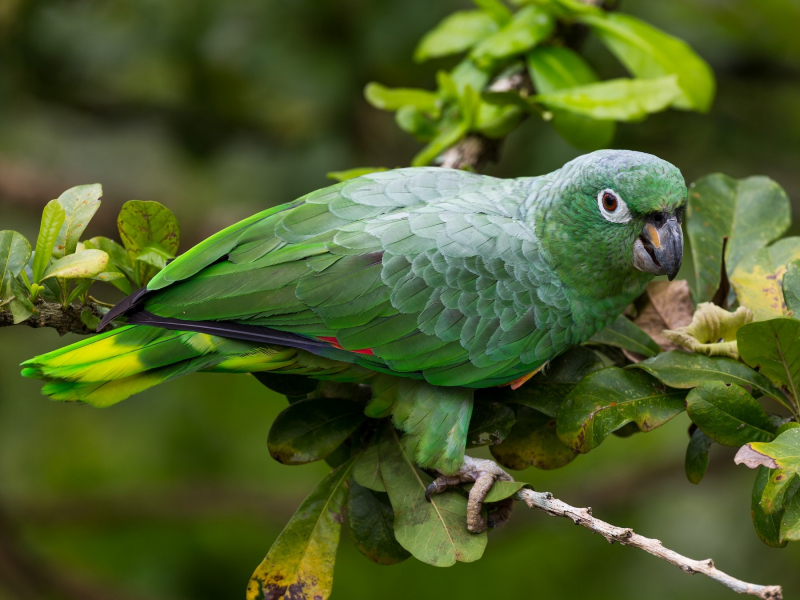
Photo: eBird 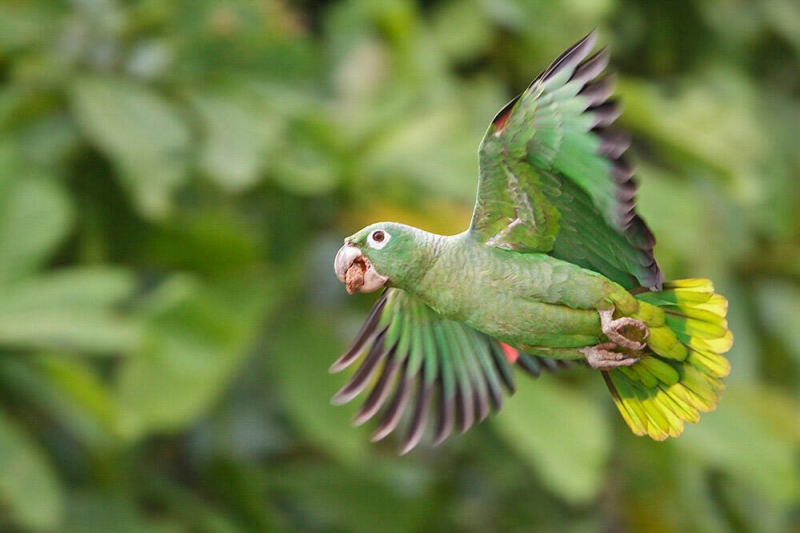
Photo: National Audubon Society -
Cockatiels are popular as pets and are fairly friendly birds. They're also highly vocal, and if they're upset or bored, they'll chirp loudly. They can even learn to whistle a variety of tunes, perform stunts, and even talk. The decibel level of their noise is 123, so it is one of the loudest birds on this list. It's enough to irritate your ears, particularly if the bird is close by.
Cockatiels are endemic to Australia, where they can be found mostly in dry or semi-arid areas with plenty of water. The species, which is mostly nomadic, will go to where there is food and water. They usually travel in pairs or small groups. Cockatiels in the wild eat a variety of seeds, including Acacia, wheat, sunflower, and sorghum. They frequently devour cultivated crops, much to the chagrin of many farmers. The most fertile southwest and southeast regions of the country, as well as the deepest Western Australian deserts and the Cape York Peninsula, are devoid of them.
Noise: 123 dB
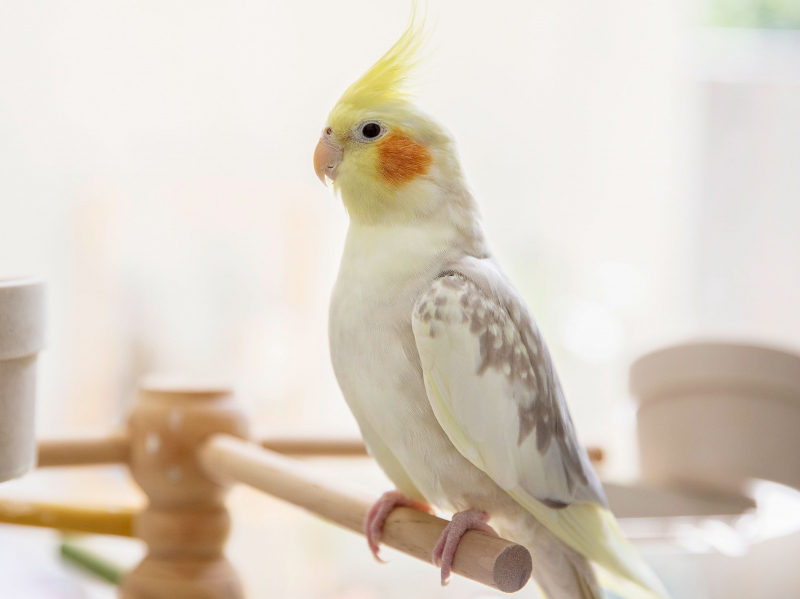
Photo: The Spruce Pets Source: Parrot Corner -
The Sun Conure, sometimes known as the Sun Parakeet, is another exotic-looking pet bird. It is one of the most popular types of pet conures. It is as gorgeous as it is caring and intelligent, with bright orange and yellow feathers and green and blue on its wing feathers. It enjoys bonding with humans. It's also quite vocal, with some of the loudest chirps reaching 120 decibels. The Sun Conure's voice is harsh and piercing, and it is emitted in fast succession, but it isn't much louder than a canary's. The sun conure has intervals of noise and times of silence; nevertheless, a sunny that is insecure or lonely might be constantly (and irritatingly) loud. The sun conure isn't recognized for being a particularly good talker, although they can pick up a few phrases.
Males are considered to be significantly brighter than females, despite the fact that their coloring is extremely comparable. Males have a squarer, flatter head, while females have a rounder, smaller head.
Noise: 120 dB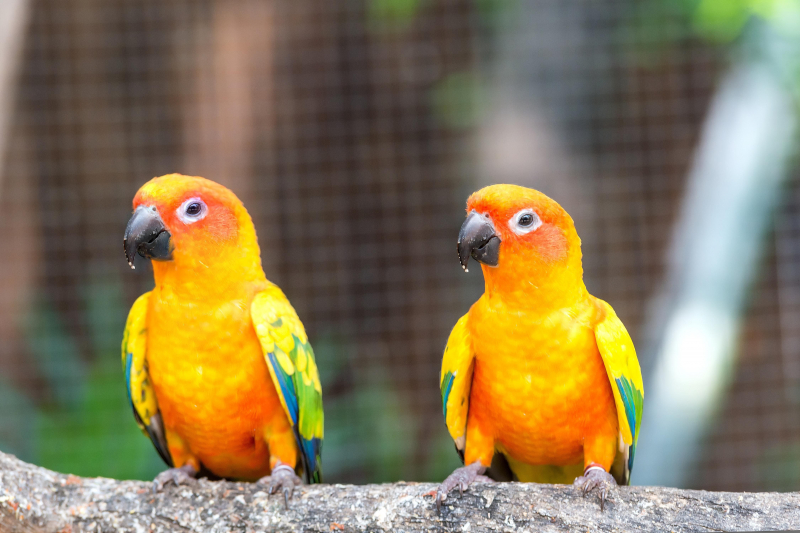
Photo: The Spruce Pet 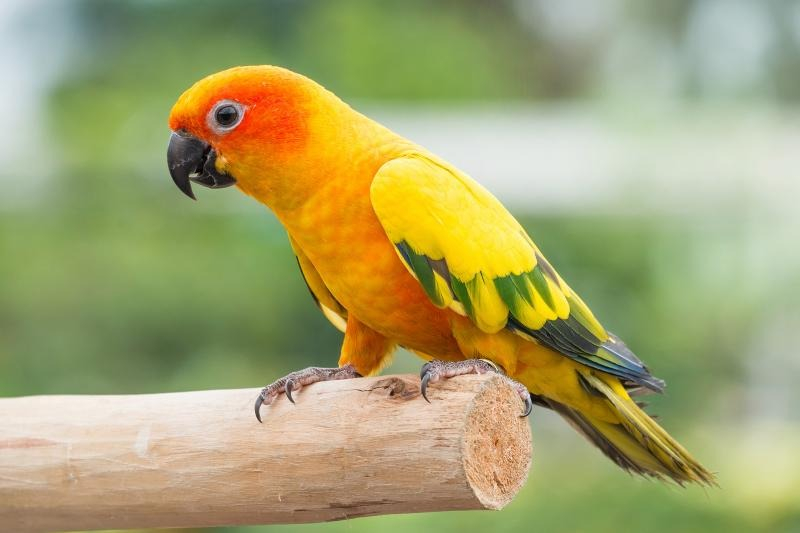
Photo: Lovetoknow -
If you’re ever lucky enough to see the beautiful and stunning peacock while it is chirping, you can be surprised that it is one of the loudest birds. Its noise level, at 115 dB, is comparable to that of a leaf blower, chainsaw, or snowmobile, despite not being as loud as some other birds (106-115db). Males are known for their brightly colored plumage and piercing sounds.
Peacocks create these noises for a reason, despite their anger. They will make a brief squawk to signal their presence when they enter their environment. Peacocks have many predators, so if a larger animal approaches their territory, one bird will sound the warning, which will be repeated by others. The birds will take flight towards surrounding trees for better protection after the alert is sounded. Finally, during their mating season, which lasts from early spring to late summer, peacocks make the most noise.
Noise: 115 dB
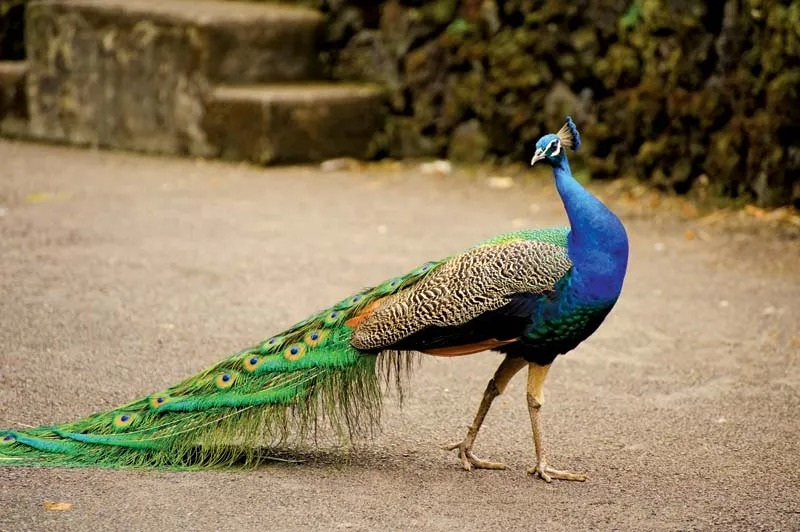
Photo: Encyclopedia Britannica Source: eccofan180 -
The Eclectus Parrot is native to the Maluku Islands (Moluccas), northern Australia, New Guinea and surrounding islands, Sumba, and the Solomon Islands in Southeast Asia and Oceania. Because the male and female species are so different from each other, the name "Eclectus" is derived from the term "eclectic."This kind of wild bird is commonly raised as a pet. Its chirp has a decibel level of 115.
The male is primarily bright green, with a golden tinge to his head. The primary colors are blue, with red flanks and underwing coverts. It has a small band of creamy yellow around the edge of its tail, which is dark grey with creamy yellow below, and the tail feathers are green in the middle and bluer as they come closer to the borders. The rear and wings of the great Eclectus Parrot female are darker than the rest of the body. The mantle and underwing coverts deepen to a purple hue, and the wing is bordered in a mauve-blue color. Above the yellowish-orange margin, the tail is more orange-tipped with yellow beneath.
Noise: 115 dB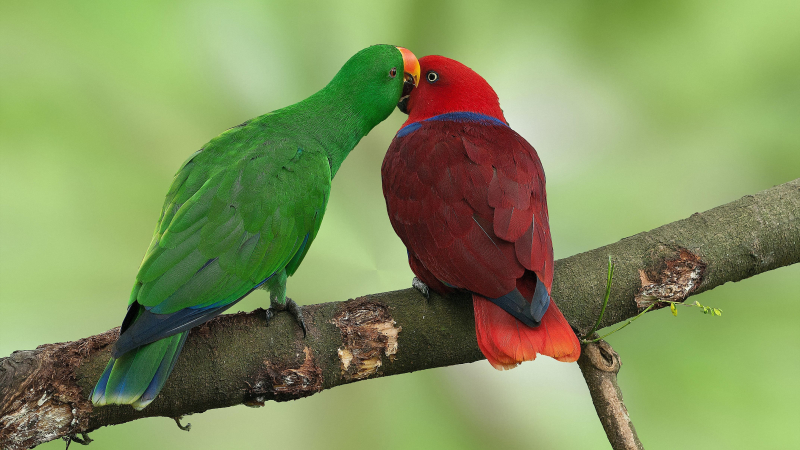
Photo: The Spruce Pets Source: PDP nonprofit -
The most popular pet bird species on this list is the parakeet. Their whistles and chirps usually have a decibel level of 65 to 70, which is comparable to office noise or background music. Despite their diminutive size, they can be near twice as loud as larger birds. Their loudest cries have been measured at 111 to 112 decibels, which is comparable to that of a chainsaw, leaf blower, or snowmobile.
Parakeets can be found in Australia's drier ecosystems, whereas rose-ringed parakeets can be found in cities and have grown invasive in places like London. Grasslands, farming, woodlands, and wet areas such as bogs and swamps are also home to these species. They are native to South America and Asia, in addition to Australia. The Carolina parakeet, which had beautiful green, yellow, and orange plumage and was now extinct, was a unique bird native to the United States.
Noise: 65-70 dB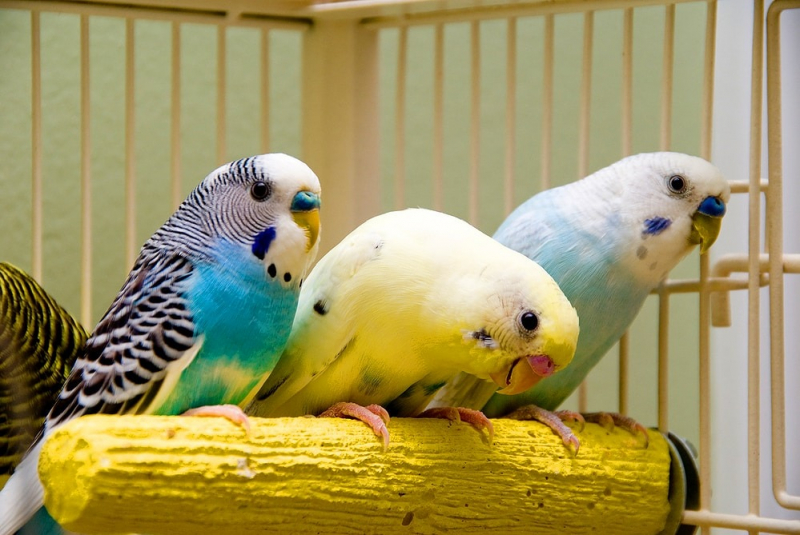
Photo: World Birds 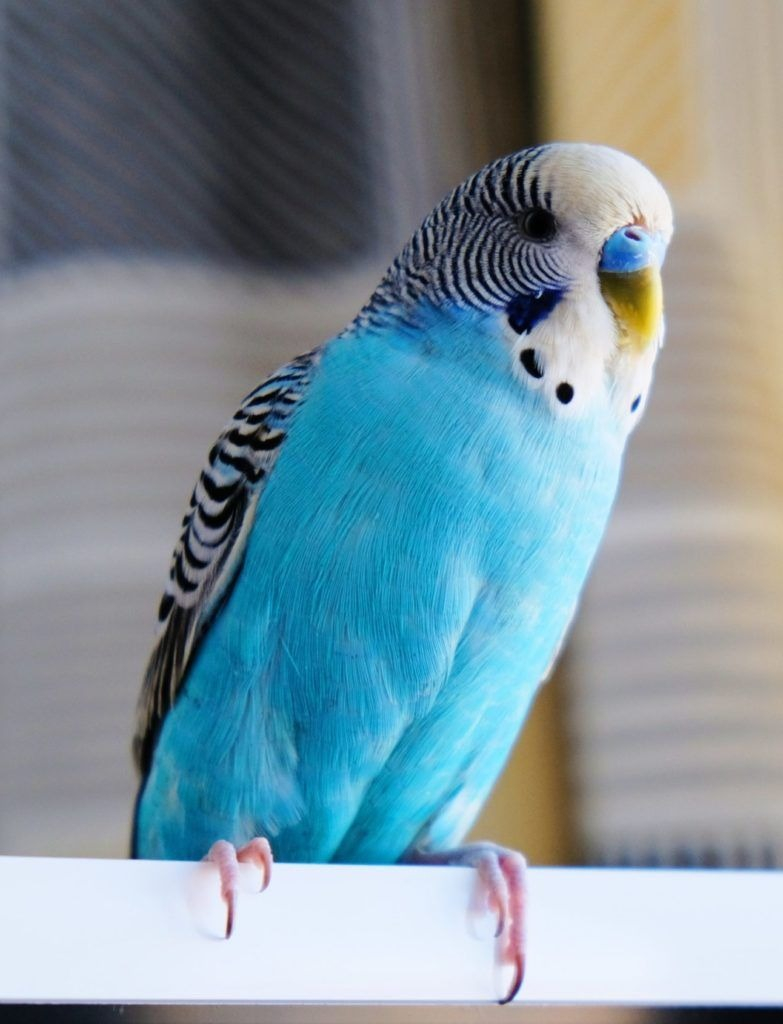
Photo: Pinterest












